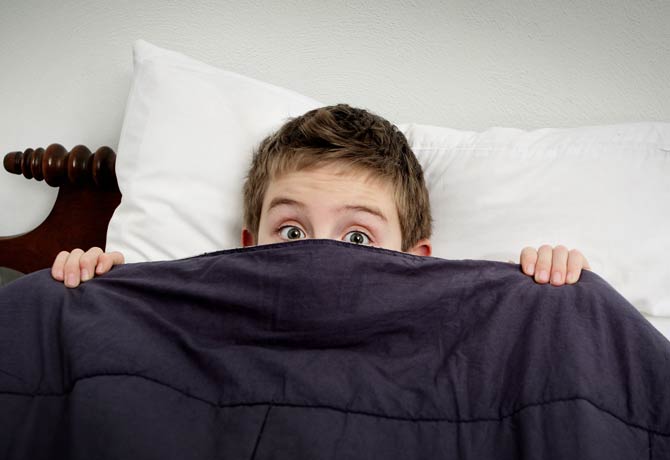Helping the Family Cope with the End of Daylight Saving Time
Daylight Saving Time ends at 2AM on Sunday November 1st, which means the clocks turn back one hour. Most are thinking “Yay! An extra hour of sleep!” or “Awesome! An extra hour to party!” But if you’re like me, you fall into the category that is thinking “Darn it! My kids will most likely be up at the exact same time, no matter what the clock says!”
Since I’m usually on top of these changes, I have ample time to call “dibs” on sleeping in and asking my husband to get up with the kids.
There are some advantages and disadvantages to children not being able to tell what time it is on the clock. The advantage is that we can use external cues to help their bodies adjust naturally, whereas us adults tend to obsess over the old time versus the new time. The disadvantage is that some children are very sleep sensitive which means their bodies take much longer to adjust to any small change.
As parents, you just need to know if your baby, toddler or school-aged child falls into this category, and allow them ample time to shift to the new time. Maybe it takes you more than a few days to adjust too! Here are some tips to help the whole family cope with the end of Daylight Saving Time.
Babies
Younger children have no sense of time, but their bodies know when to eat, sleep and play based on their internal clock, or circadian rhythms. This internal clock is set based on natural light as well as external cues throughout the day. This is why a bedtime routine is so important; it helps them know when sleep is coming, even if they can’t tell the time.
When it comes to the time change and end of Daylight Saving Time, it’s critical that we follow their same schedule and routine, but shift it later. Those children who are more sleep sensitive may need help shifting their schedule gradually. You can either shift their schedule in advance of the time change, or after the time change, but the key is to do it in increments rather than all at once. Gradually shift their entire daytime schedule later in 10-15 minute increments so that by the time the change comes, they should be on the new time.
Younger children have no sense of time, but their bodies know when to eat, sleep and play based on their internal clock, or circadian rhythms. This internal clock is set based on natural light as well as external cues throughout the day.
If you’ve chosen to wait until after the clocks turn back, your entire schedule will just be on the early side, and you’ll need to spend a few days shifting it later. Regardless of when you shift their schedule, make sure you move all of their daily activities, not just their sleep times. Mealtimes, diaper changes and activity times should be shifted too.
Exposure to daylight can also aid in the shift. Go for a walk, each breakfast on the porch or go get the mail. Exposure to light first thing in the morning will suppress the production of melatonin and get their bodies going for the day. Towards the end of the day, send the opposite message to the body by dimming the lights in the house and avoiding stimulating activities.
Toddlers
Many toddlers have made the transition from their crib to a toddler bed, so it’s a lot more difficult to keep them in bed until the new wake up time. You can help keep your child in bed longer by using a child alarm clock, or even a simple digital clock. Explain to your child that they need to stay in bed until the clock turns yellow, or the first number is “7.” It’s also helpful to install some black out blinds to block out the new early morning daylight. If your child stays in bed longer, you delay their exposure to natural light making it easier to shift to the new time.
Research shows that the blue light emitted from electronics, such as TVs, computers, tablets, or smart phones has the strongest effect on melatonin production.
School Aged Children
You can help your older children who are able to tell time shift their internal clocks as well. Turn the clocks back 1 hour after your child has gone to bed, making it easier for them to sleep in the morning. If you avoid talking about the time change, they may never know it even happened! At this age it’s important to allow nature to take its course.
Research shows that the blue light emitted from electronics, such as TVs, computers, tablets, or smart phones has the strongest effect on melatonin production, which is the body’s natural sleep inducing hormone. It’s important to turn these devices off at least 1 hour before bed to help get them nice and drowsy. If your child is using electronics before bed, it will most likely delay the onset of sleep, making it difficult to adjust to the new time.
Adults
I often find myself doing this, but try not to obsess over what time it is and what you should be feeling. Out with the old, in with the new!
Set the clocks back in your home before you go to bed (if you even need to do that anymore!) and just go about your day on Sunday like you normally would. Practice healthy sleep hygiene and follow your bedtime routine, avoid caffeine after lunch, and put away your smartphone at least 1 hour before bed. Getting back to basics can not only help your body adjust, but it will help you get a great night’s sleep and feel refreshed Monday morning!
Jenn Kelner is a mother of three children, including twins, and a Certified Pediatric Sleep Consultant at BabyZzz. Just as every family is unique, Jenn supports many different sleep methods and works directly with families to design a solution that will help them become well-rested, happy families.










